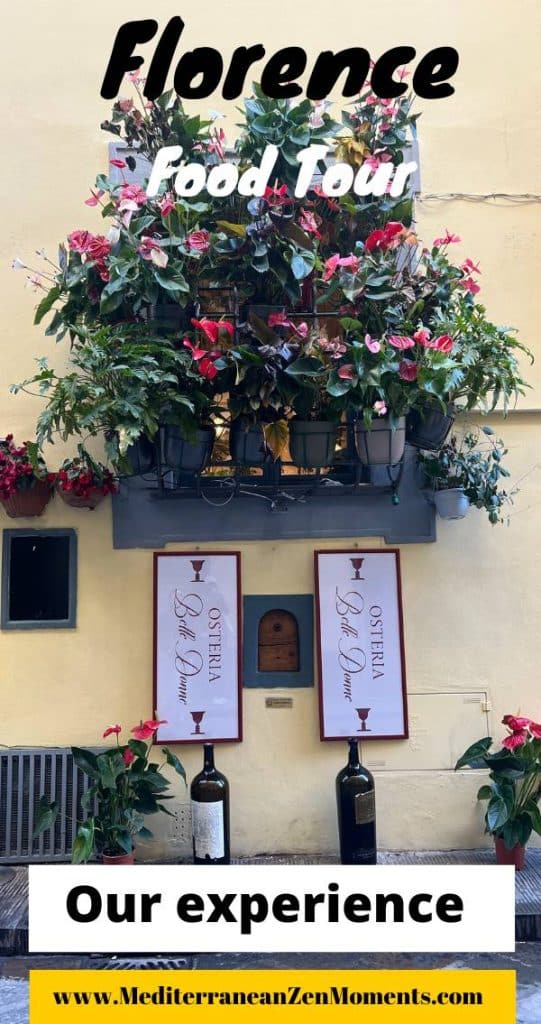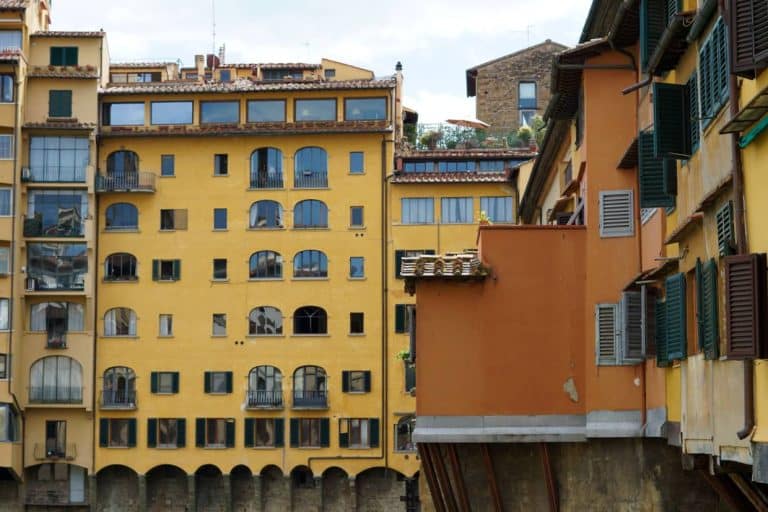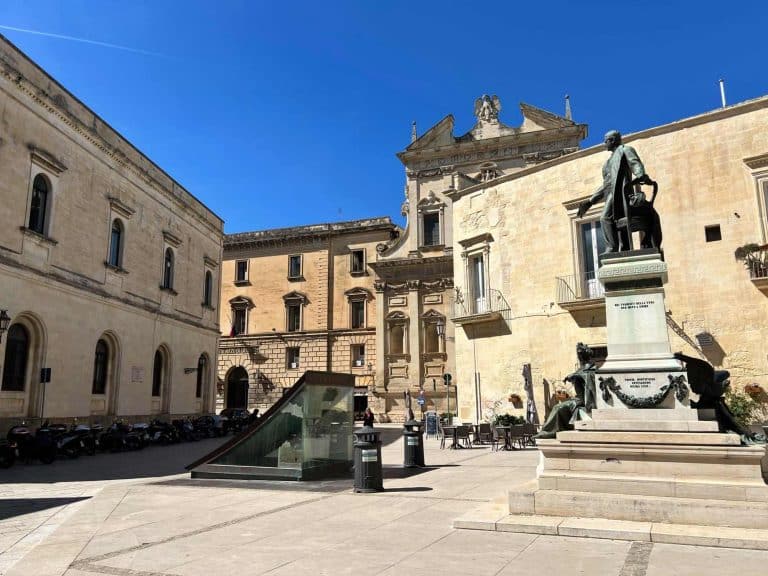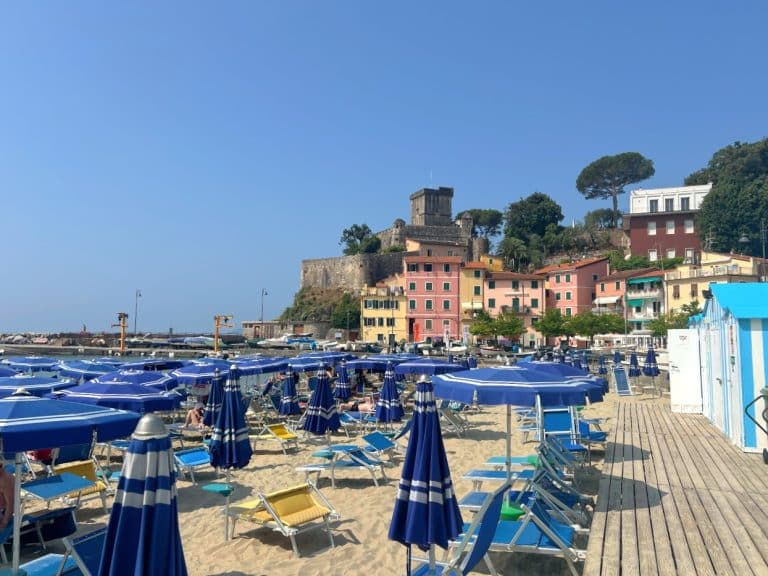Going on a Food Tour in Florence, Italy
“Why haven’t I been on a food tour sooner?” I thought immediately after finishing the one I went to in Florence. Sure, Italian food is delicious, but a tour allows you to discover local places and learn about food and people.
After moving to Tuscany, I researched the region’s cool activities. And let me tell you one thing: you cannot get bored in Tuscany! There is something for everyone, even if you are traveling with a kid.
When one good friend came to visit, I knew I wanted to take her to Florence. It is still hard to grasp that I can hop on the train and be there in around 1 hour. However, I thought it would be a good occasion to do a food tour. We both love Italian food (and food in general), Italy and walking a lot.
Thus, after researching, I booked us on this food tour. And we were both happy with the choice! Let me tell you why.
This post contains affiliate links to products and services that I may be compensated for, at no extra cost to you. Read more about this on our disclosure page here.
Table of Contents
Why a food tour in Florence is a must!
Some background about traditional food in Florence, Italy
Visitors eager to experience authentic Tuscan flavors should start with Bistecca alla Fiorentina, the city’s iconic dish.
This massive T-bone steak, sourced from the prized Chianina cattle, is cooked over an open flame and served rare, allowing the high-quality meat to shine.
It’s typically enjoyed with a drizzle of olive oil and a side of white beans or roasted potatoes.
Another must-try is Lampredotto, a beloved street food made from the fourth stomach of a cow, slow-cooked with herbs and served in a crusty roll.
Often topped with a spicy or green sauce, it’s a flavorful, budget-friendly option that captures the city’s rustic culinary traditions.
For a heartier dish, Ribollita is a comforting Tuscan bread soup made with cannellini beans, vegetables, and stale bread simmered to perfection. Originally a peasant dish, it has become a staple in many Florentine restaurants, especially in the colder months.
To end your meal sweetly, try Cantucci e Vin Santo – crispy almond biscuits served with a glass of Vin Santo, a decadent dessert wine perfect for dipping.
What we tasted on our food tour in Florence
We met our guide and the other participants at 11 AM in a piazza close to the train station and Santa Maria Novella Church. The meeting point was easy to find, and we were there 10 minutes before the starting time.
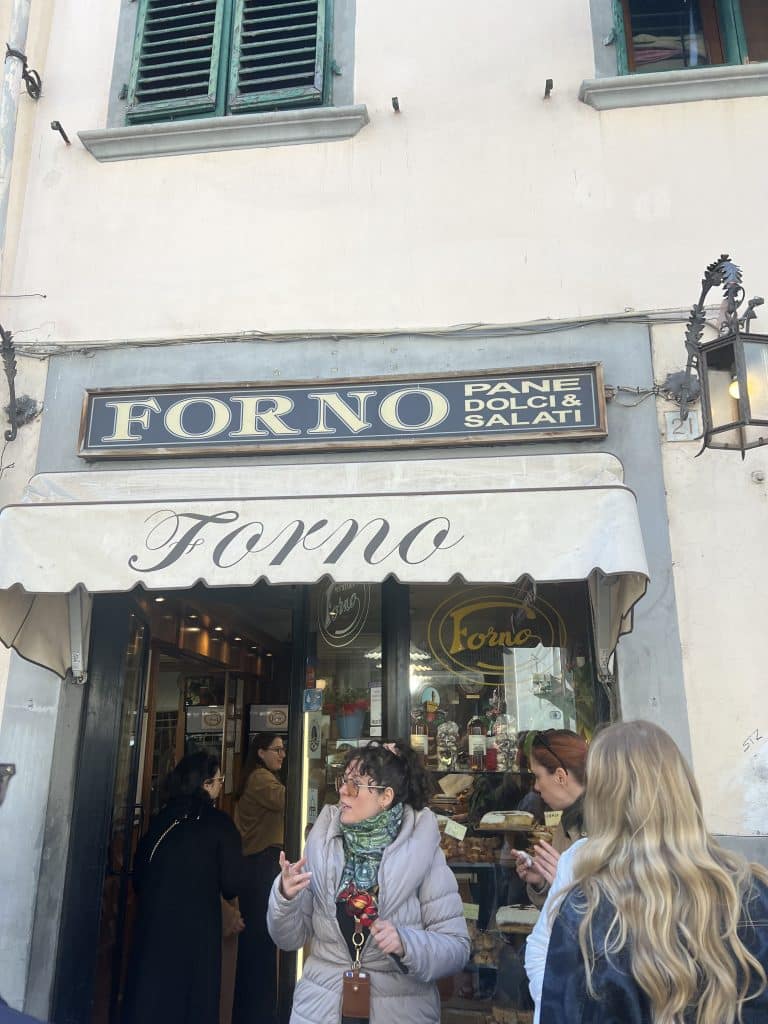
Our guide, Anna, told us a little bit about the tour and our schedule. She was very nice and answered all our questions as we walked on the streets of beautiful Florence.
One thing to pay attention to in Florence is traffic. Not many streets are pedestrian-only (even if they might look like they are), and cars come from nowhere.
We appreciated the fact that the guide did her best to choose small shops owned by locals, most of them in the family from many generations. As she explained, nowadays, it is almost impossible for small, independent owners to open a shop in the old town part of Florence. That’s because rent is impossibly high, and many chain restaurants or big brands have taken over.
On the tour, we had six stops.
The first stop: a local pasticceria
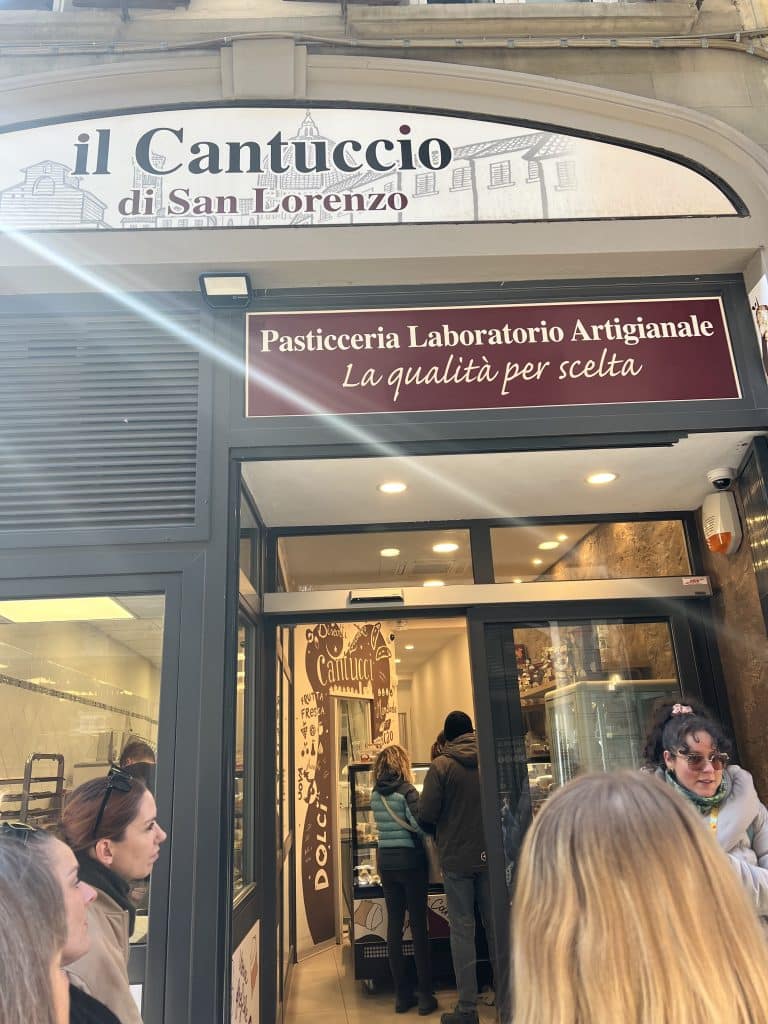
In this small place, we got to taste the famous cantucci with vin santo wine.
Unlike most cantucci I’ve ever tried before, these were really soft, moist, and absolutely delicious. Pairing them with the vin santo is something I’d never tried before.
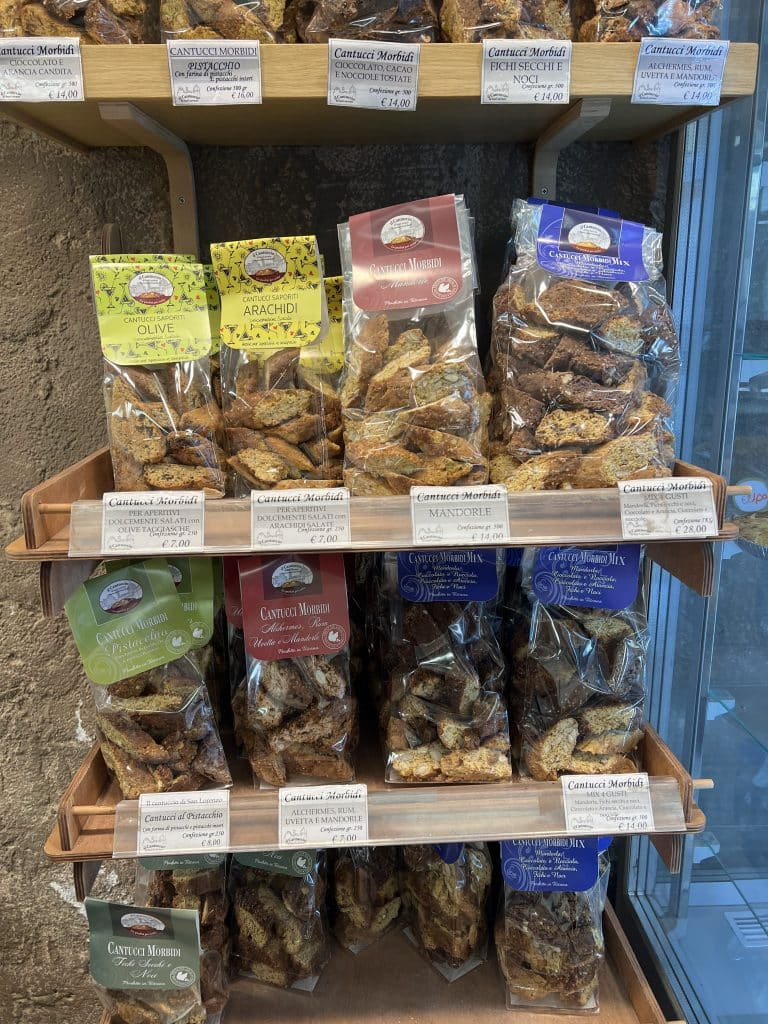
Now, a little bit about the wine. This is a sweet liqueur wine, and its name sounded very familiar. That’s because it actually comes from the island of Santorini – thus the name “santo wine”.
This dessert wine, typically made from Trebbiano and Malvasia grapes, has been produced in Tuscany for centuries. Its rich, golden hues and sweet, nutty flavors make it a perfect pairing for cantucci, the classic almond biscotti that Florentines love to dip in their wine.
The history of Vin Santo dates back to the Middle Ages, and its name is believed to have religious origins. Some say it was used in Mass, while others trace the name to a 14th-century event in Florence when a Greek priest claimed that a local sweet wine tasted like “Xantos,” a famous Greek dessert wine.
Second stop: a small “forno” for “coccole”
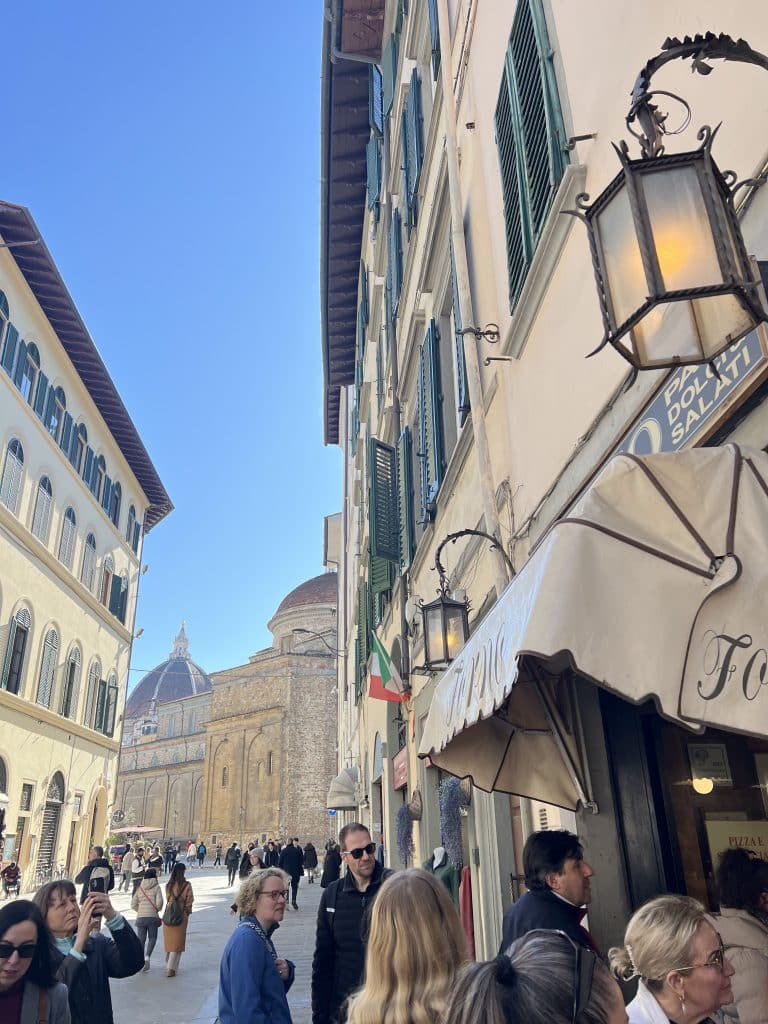
The second stop was right next to the Mercato Centrale in San Lorenzo, at a small and traditional “forno”. That’s the place where they bake bread and other traditional sweets.
At Forno Bruschi Ivana Hemp, the owner will serve you traditional goodies. She is in her 90s and has worked here since she can remember.
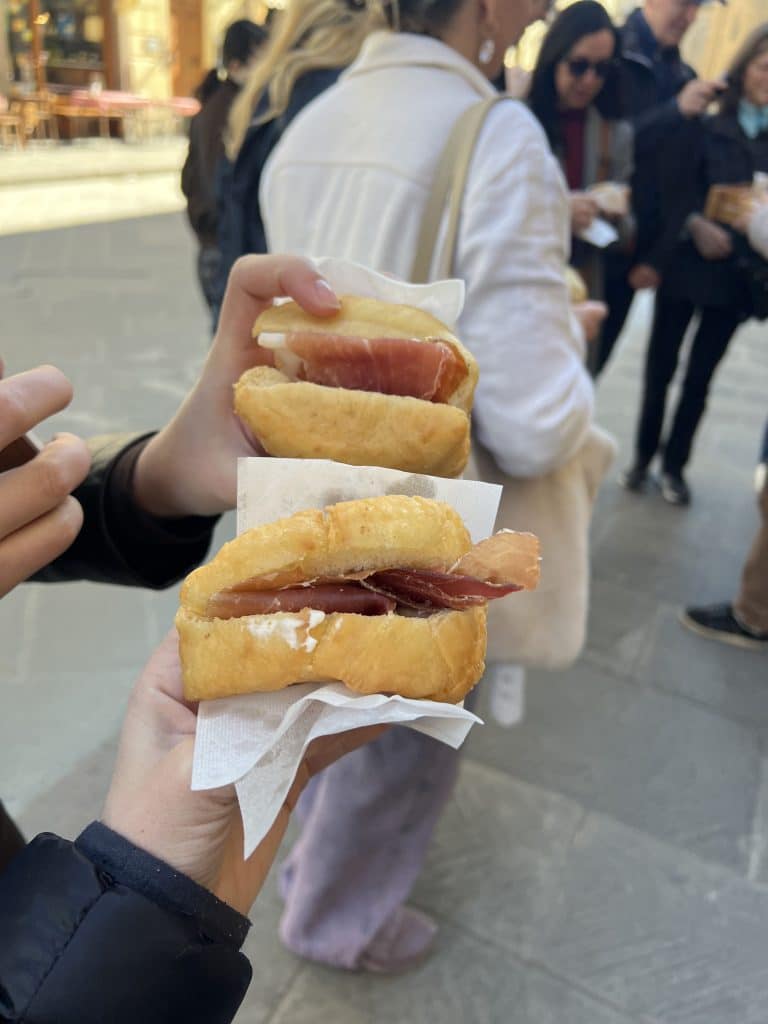
We tried the traditional fried dough with cheese and prosciutto. Needless to say, it was delicious!
Third stop: Mercato Centrale San Lorenzo
This was one of the longest stops and where we got to try a lot of amazing tartufo (truffle) products.
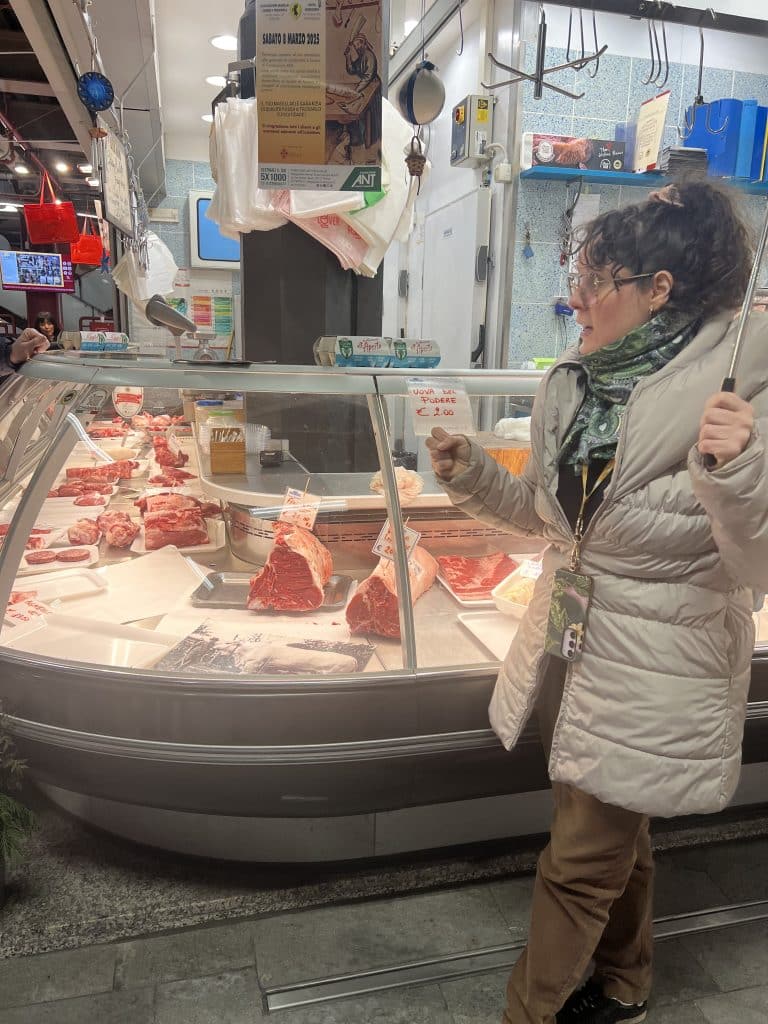
Even walking towards this stand was interesting because we saw many local delicacies, such as the “bistecca” or tripe. The guide explained how to buy and eat them or how to ask for them at the local restaurants.
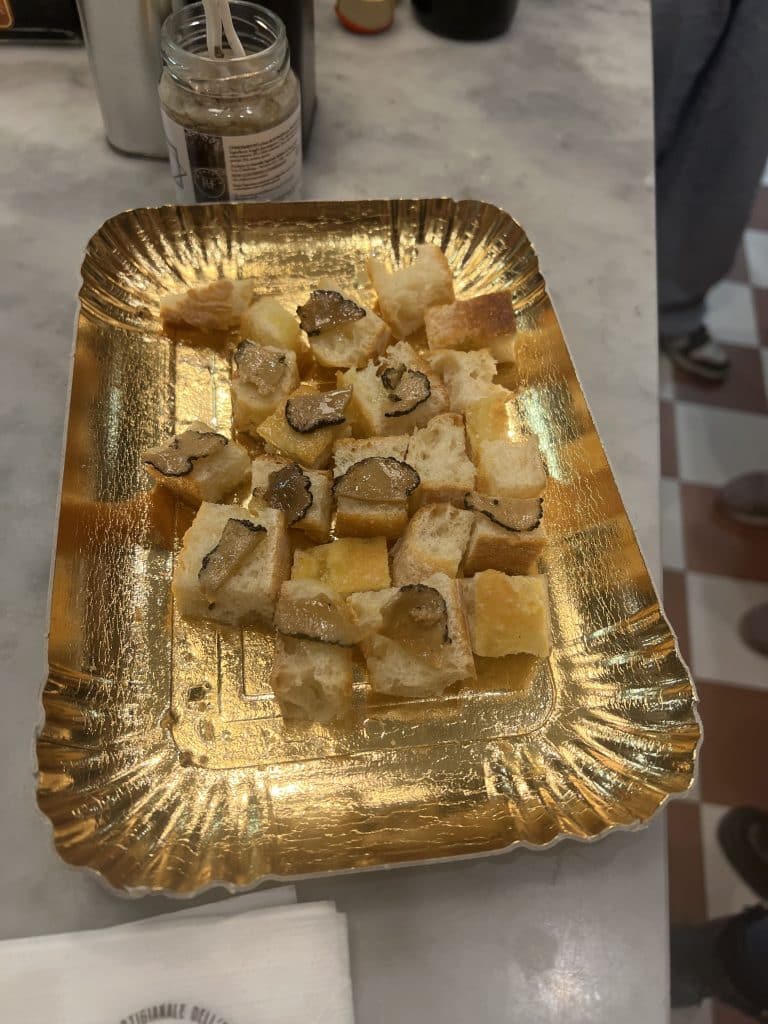
At the stand, we learned about truffle – how it’s found, why it is so expensive, and how to make the best out of it.
We got to try truffle with focaccia, truffle olive oil, truffle paste, and even truffle honey.
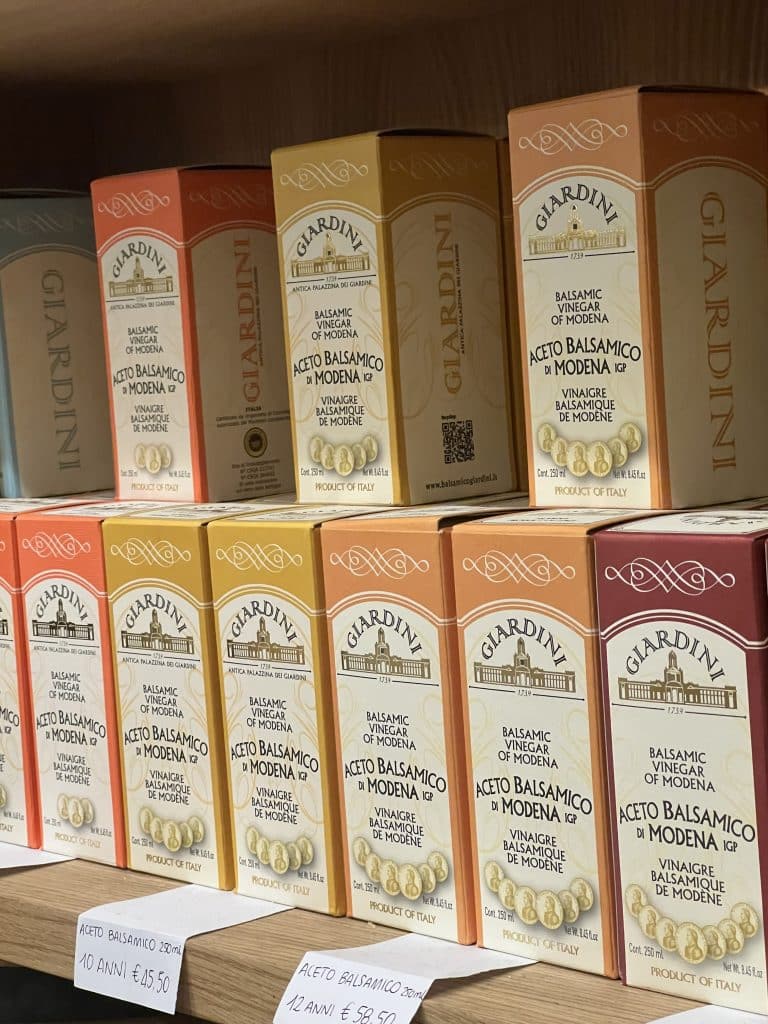
In the same place, we tried aged Modena vinegar – 3, 6, 10, and 15 years.
This place has lots of delicious products that you can bring home for yourself or as a souvenir from Italy.
Fourth stop: lunch with ragu pasta
For lunch, the guide took us to this local restaurant. We had lunch with workers and local people.
That’s the first thing you must know about eating in Italy: look for the basic places where locals go to eat.
Of course, you might not find these places around very touristic places such as the Amalfi Coast, but in places like Florence there are lots of them.
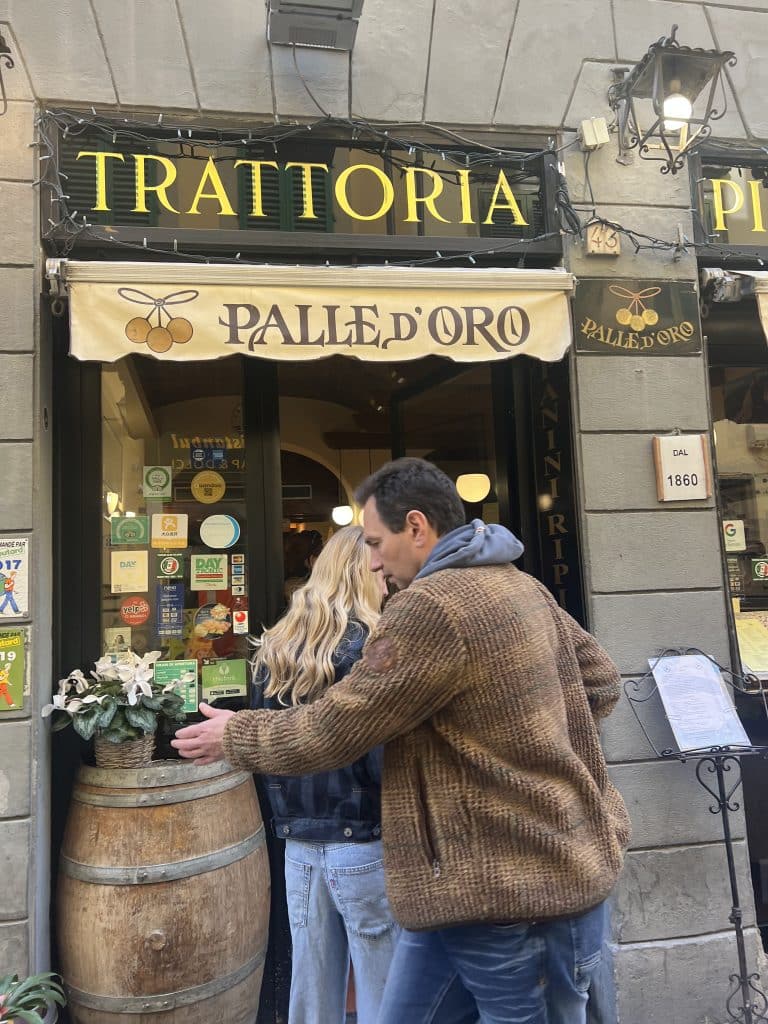
On a side note, in case you ever wondered what’s the difference between an osteria and a trattoria, I asked the guide so you don’t have to. Apparently, in the past, an osteria was not only a place where people would eat, but more like an inn. Osteria comes from “ospitare” which means “to host”.
Whereas, on the other hand, trattorias were low key restaurants.

But coming back to our lunch. We had penne al ragu at a very local and authentic trattoria. While they did not look spectacular, they were absolutely delicious! I drizzled some parmiggiano, got a glass of Chianti, and I was in heaven.
Fifth stop: schiacciata with local salami
I don’t have a picture of it because I was already too full to eat it, so I took it for later. However, even a few hours later, this sandwich was delicious!
Before moving to Tuscany, I was not familiar with schiacciata. This is actually the local focaccia. Apparently, focaccia is fluffier while schiacciata is crunchier. However, I don’t always see or can tell them apart.
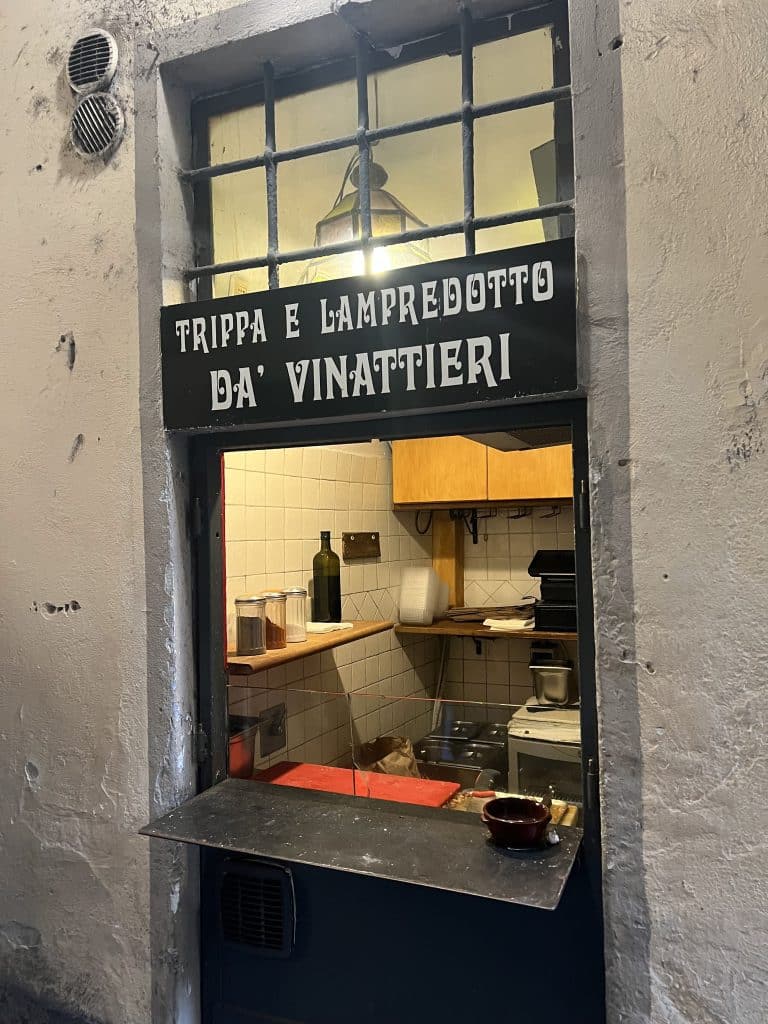
We got our sandwich from a “whole in a wall” type of place, right next to the House of Dante Museum.
To be fair, I would have passed by it without even noticing. But many locals were getting their tripe sandwich for lunch, so I would say it is a place worth trying.
Sixth stop: gelato

Of course, no food tour in Florence could end without a terrific gelato! After all, Florence is its birthplace.
The guide took us to Perche No, a small family-owned gelateria steps away from the Duomo. She also told us how to spot good gelato and how to avoid the “touristy” one.
Additionally, I asked her for her top 5 favorite gelaterias in Florence, and here is the list:
La Strega Nocciola
La Sorbettiera
Rivareno
Perche no
Slitti
Was the food tour worth it?
Absolutely!
I only regret that I’ve been to so many places worldwide without trying a food tour. It is a great way to learn and understand the local culture. All while tasting some of the best traditional dishes in authentic places.
Of course, many might take you to tourist-oriented restaurants. But this tour was perfect in terms of how the guide chose the stops.
Overall, I feel we got a fair amount of food and information for the money we paid.
PIN FOR LATER!
